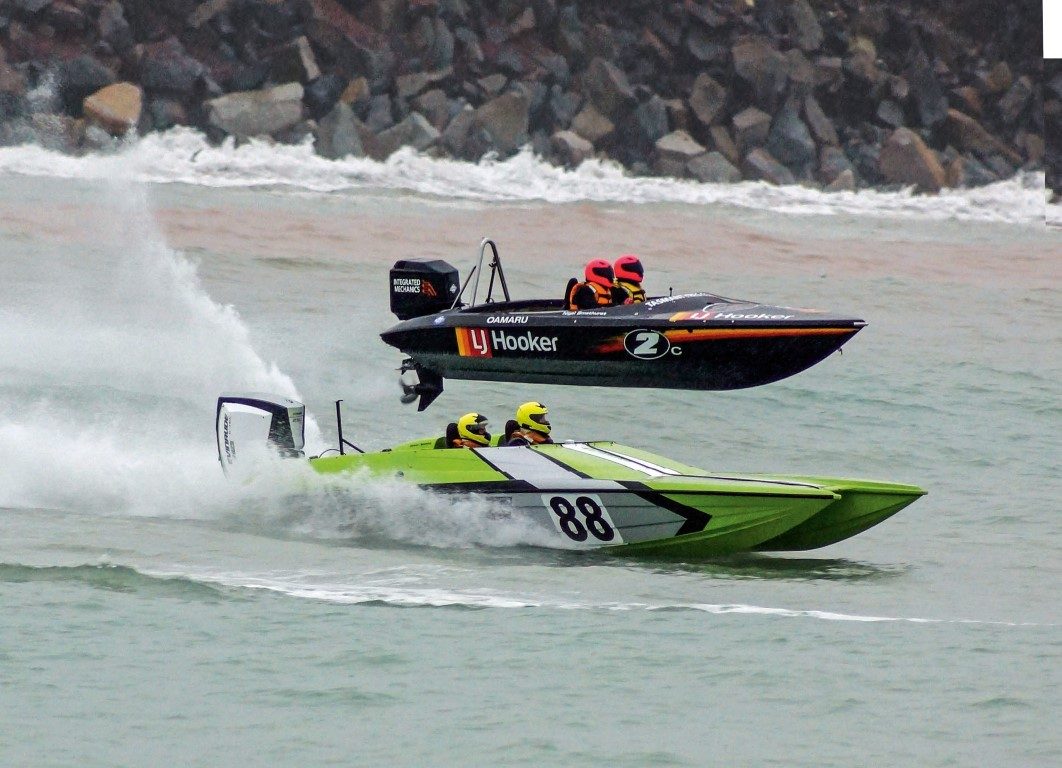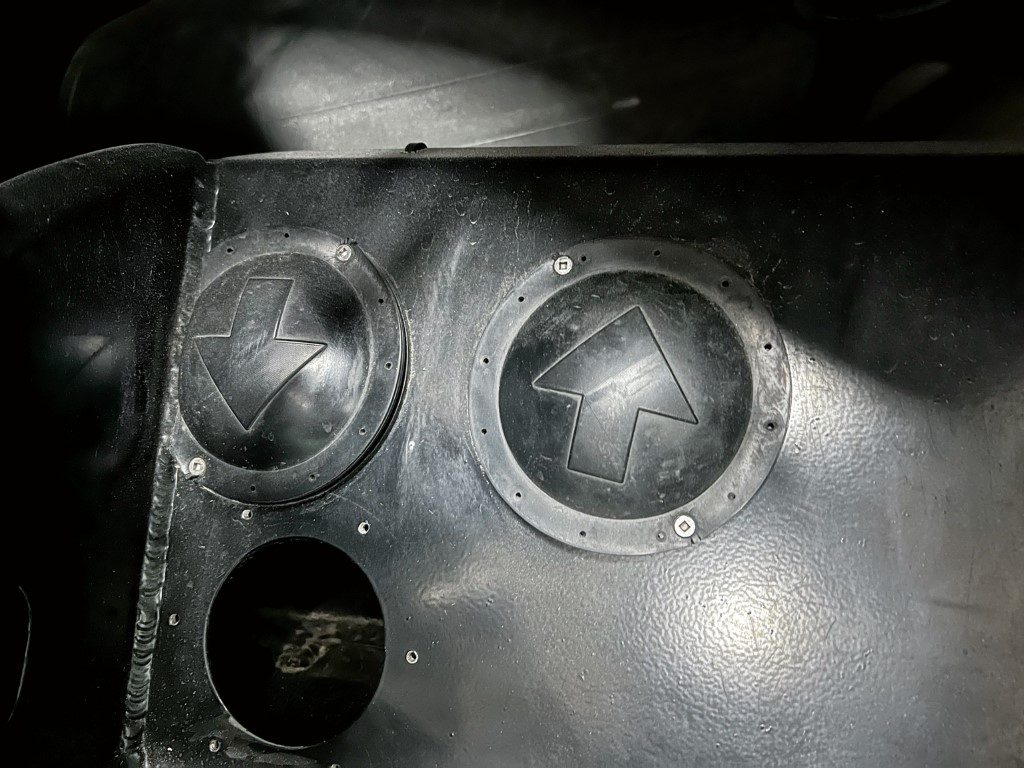

Whether racing or just power boating for fun, trimming the boat is the key to optimum performance and comfort. For competition boat drivers, proper trim wins races.
One of the most important parts of powerboat racing, of whatever type, is trimming the boat correctly. Trim is extremely important to ensure you get the best performance from your everyday boating as well. One touch of the trim in the right direction could be worth an extra knot, depending on the race conditions. Too much trim and the nose can get flighty, blowout can occur and incidences of tripping off waves and broaching dramatically increase. Too little trim and you’ll have too much hull in the water, causing more drag and resulting in less speed. Trimming is a fine art.

When you step into catamarans they become such a handful to keep going in a straight line that the most common way to efficiently run them is to have separate roles for the driver and a co-driver. A driver in charge of the helm and a throttleman in charge of throttle, trim, tunnel flaps and engine height, where these features are adjustable. That’s because catamarans rely not only on hydrodynamics but also on aerodynamics. The tunnel between hulls dams air creating lift for the boat, allowing the hull to sit up out of the water and run on a pocket of air.
Trimming is an art, there’s no two ways about it. Time in the seat is the only way to learn what works and what doesn’t. A high top speed doesn’t always mean you’ll be fast around a course. However in most circumstances smooth minor adjustments made ahead of changing water conditions equals fast. A consistent, comfortable speed will often yield better results than running too much trim for the extra half a knot only to hit a joggly patch and needing to shed speed to steady
the ship.

Too much trim running off a swell face could get you into a heap of trouble, in the same way it can crossing a bar when throttle is applied at the wrong time. Reading the water ahead and trimming for it is a skill. Forget about reaching for your remote control/hand throttle. Invest in a decent foot throttle and pick up an indicator-style trim switch. Alternatively, many racers opt for foot trim (small floor buttons down on the footrest) or steering wheel mounted buttons. All work in the same way and allow both hands on the wheel at all times.
A good trim gauge is a must for those starting out, helping racers learn trim levels in different conditions in their craft. A good gauge allows you to feel the boat in different seas and remember where it likes to be set. After a while it becomes second nature, and you’ll spend less time looking at the gauge in reaction to what’s happening and more time looking at it in preparation for the water ahead.

Most seasoned drivers in rougher water look at their trim gauges infrequently in favour of spending more time driving to the ‘feel’ of the boat. They understand their boat – how it will launch off a wave, how it will fall, and therefore how it needs to be trimmed to shed as little speed as possible. Put two similar boats and set ups side by side and the winner of the race will often be the one that’s trimmed the best for the duration of the race.
Words by Ryan Archer. PHOTOGRAPHY BY RYAN ARCHER AND SELENA MCDERMOTT.




